New Infinitum Aircore Electric Motor Improves EV Efficiency and Cost Savings
New axial-flux traction motor ditches heavy iron and copper stator, slashing materials and energy consumption.
Frank Markus – Writer; Manufacturer – Illustrator | Jan 10, 2023
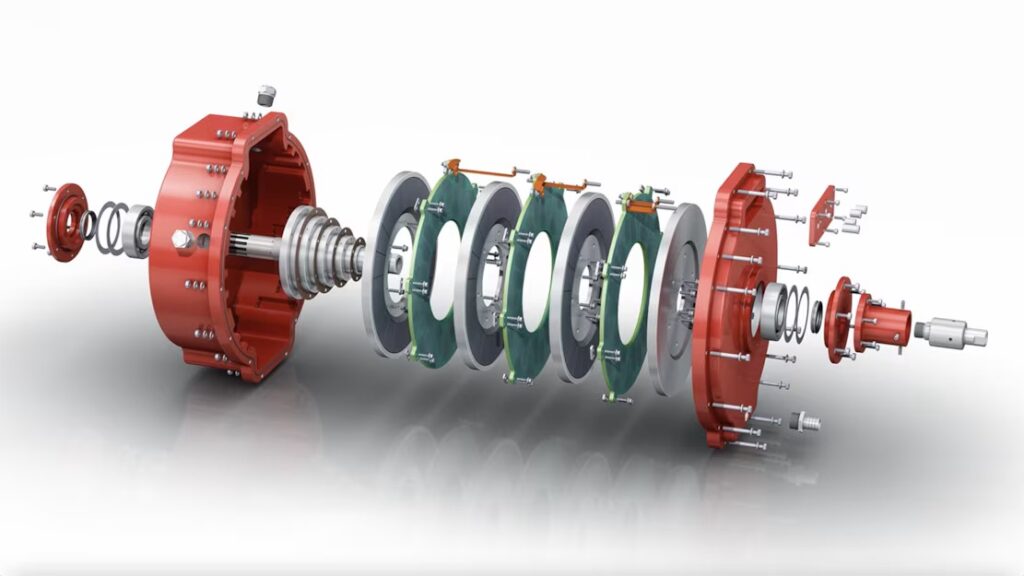
Planet Earth is estimated to have consumed 25 petawatts (pW) of electricity in 2020. That’s ’25’ hitched to 15 zeros. More than 40 percent of those electrons were routed through electromagnetic machines. Motors. Even modest improvements in electric-motor efficiency could save mankind gigawatts of power. So why do the workaday motors powering every mundane gadget look about like they did a half-century ago? Texas-based Infinitum has entered production with a new axial-flux motor design promising just such a gradual (10 percent) improvement in operational efficiency. But the knock-on effects promise to snowball the cost and energy savings.
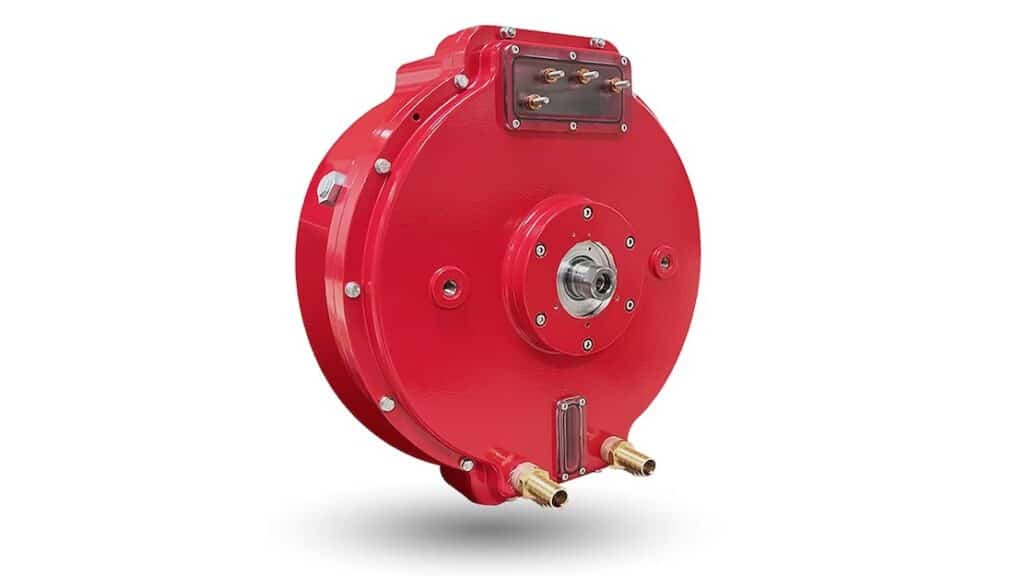
The Printed-Circuit ‘Aircore’ Motor
Infinitum’s attention grabber is its stator design, which eschews the industry typical iron or steel armature wrapped in round- or square-section copper wire. In its place intricate copper conductors are etched on a round, flat epoxy-glass circuit board, forming a stator. The rotors are largely unchanged from standard practice for pancake-style axial-flux motors—magnets fastened to a steel disc (they can be rare-earth or not, as needs and budget allow).
For any given power rating, this design is 50 percent smaller and lighter and uses 66 percent less copper. The intellectual property is covered by 33 issued and 43 pending patents, and a new factory in Mexico has will produce 50,000 small industrial motors in 2023, with plans to triple output next year. At CES 2023, the company unveiled its first traction motor application suitable for EVs.

Improved Cooling
Many industrial application motors are air-cooled, but here the “Aircore” nomenclature refers to the fact that there’s no iron in the electromagnetic flux-path, only air. This means cooling air (or oil, in the case of the traction motor) can get right to where the heat is generated.
This is far better than cooling a stator via the copper end windings or housing alone, which allows an Aircore motor to tolerate four to five times the current density of a motor with traditional copper windings. This greatly increases the Aircore motor’s power density, and those heat-loss reductions pretty much account for the operating efficiency improvement.
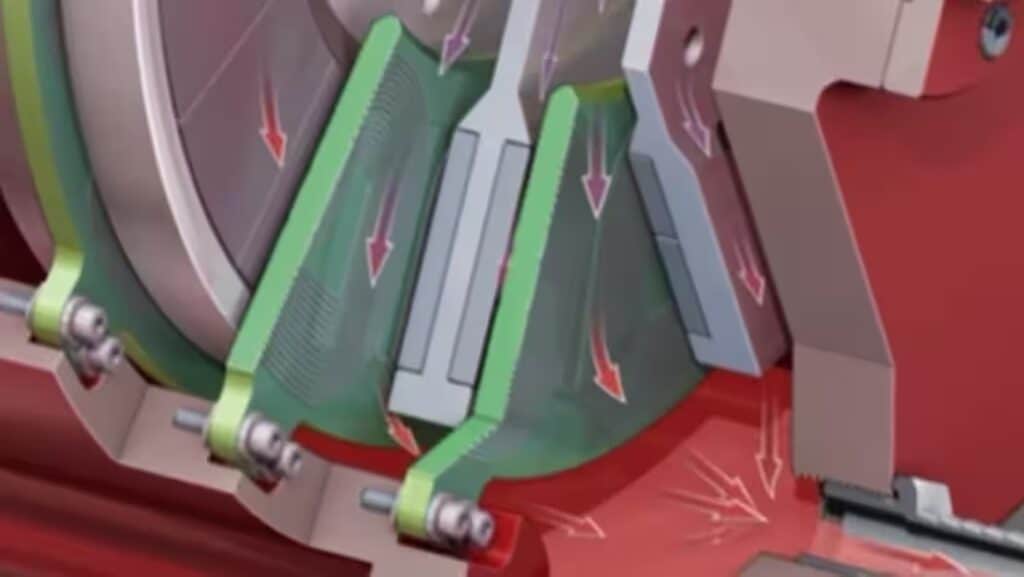
Inside The Traction Motor
The initial motor shown at CES features three printed-circuit stators sandwiched by four permanent-magnet disc rotors, and is wound for three-phase operation. Cooling oil enters under pressure through the output shaft, flowing axially out to directly cool the copper traces before collecting in a sump at the bottom. As shown, it’s rated for 201 hp continuous, 402 hp peak—and note that superior cooling potentially allows it to sustain peak power longer than other designs could.
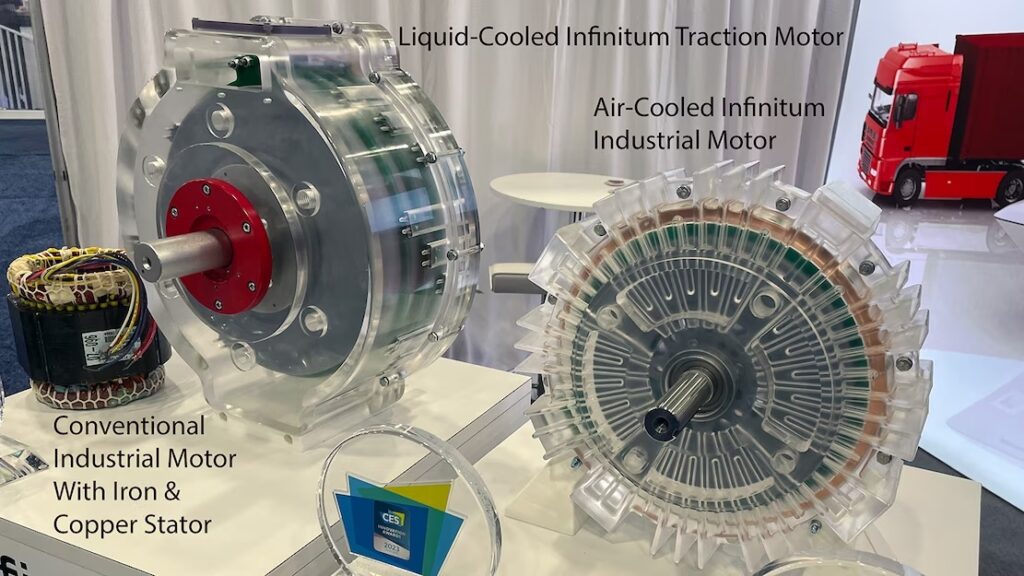
Knock-On Savings
Simply switching all the non-traction motors controlling a modern car’s windows, seats, fans, etc. to lighter, more efficient ones promises to compound the traction motor’s efficiency improvement, improving range and/or reducing battery size by way more than that 10 percent. And here’s a total-cost-of-ownership boon: Infinitum motors are fully serviceable.
Bearings, stators, rotors can all be replaced, greatly extending their useful service life, at the end of which all parts are easily recyclable. (A shocking number of the motors consuming our petawatts are simply land-filled when they break down.) One more bonus for the life-cycle analysts among you: smaller, lighter motors are cheaper and more CO2-friendly to ship—twice as many of the industrial versions fit in a container for shipping).
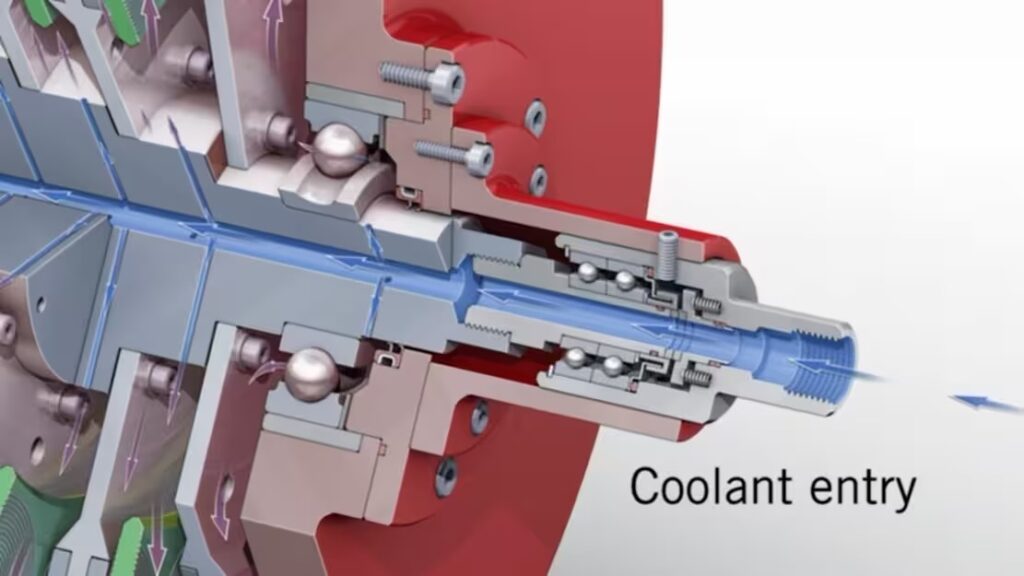
Untapped Potential
Talking to the Infinitum team, I recalled related technologies from past MotorTrend Technologue columns that may suggest further improvements. The printed-circuit stator naturally lends itself to switchable variable-phase windings that can switch from three-phase to 12 or even 18 separate electromagnetic phases to alter the torque/speed characteristics and form sort of a “virtual transmission” as demonstrated by the Chorus Meshcon motor coming soon in WheelTug aircraft nose gear.
Lighter stators would seem to make Infinitum motors attractive for in-wheel motor applications, as they can help reduce unsprung mass. This could allow these lighter axial-flux motors to further improve the ride characteristics of Indigo’s Robotic Wheel active-suspension first shown at last year’s CES.
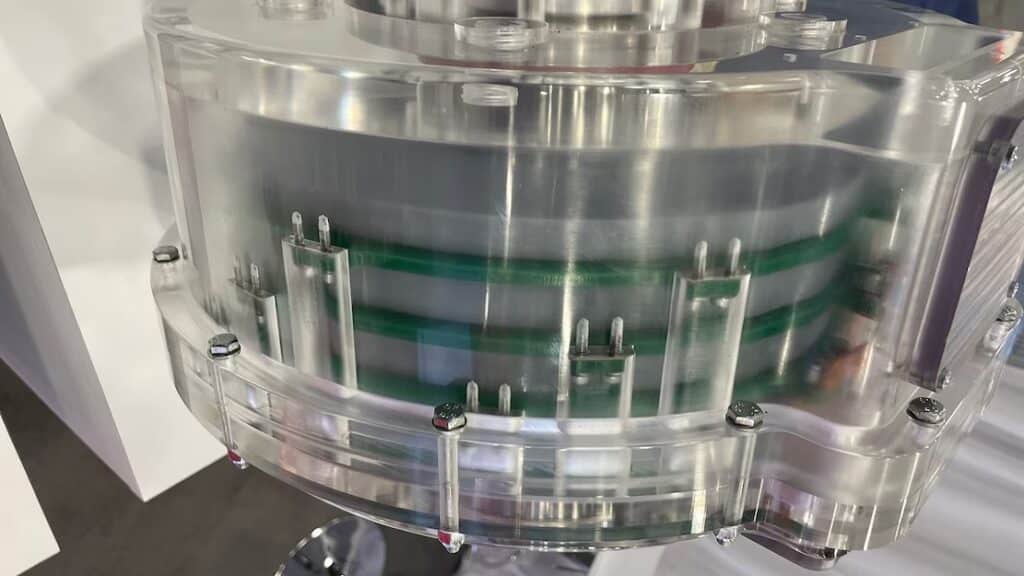
Coming Soon
Infinitum already has contracts in hand with global trucking and construction equipment firms, and Formula E is looking at the technology as well. The first traction motors will begin rolling off the assembly line in the third quarter of 2023. Here’s hoping they can help reduce our EVs’ appetite for electrons and thereby partially suppress our global 25 pW appetite for electricity.

